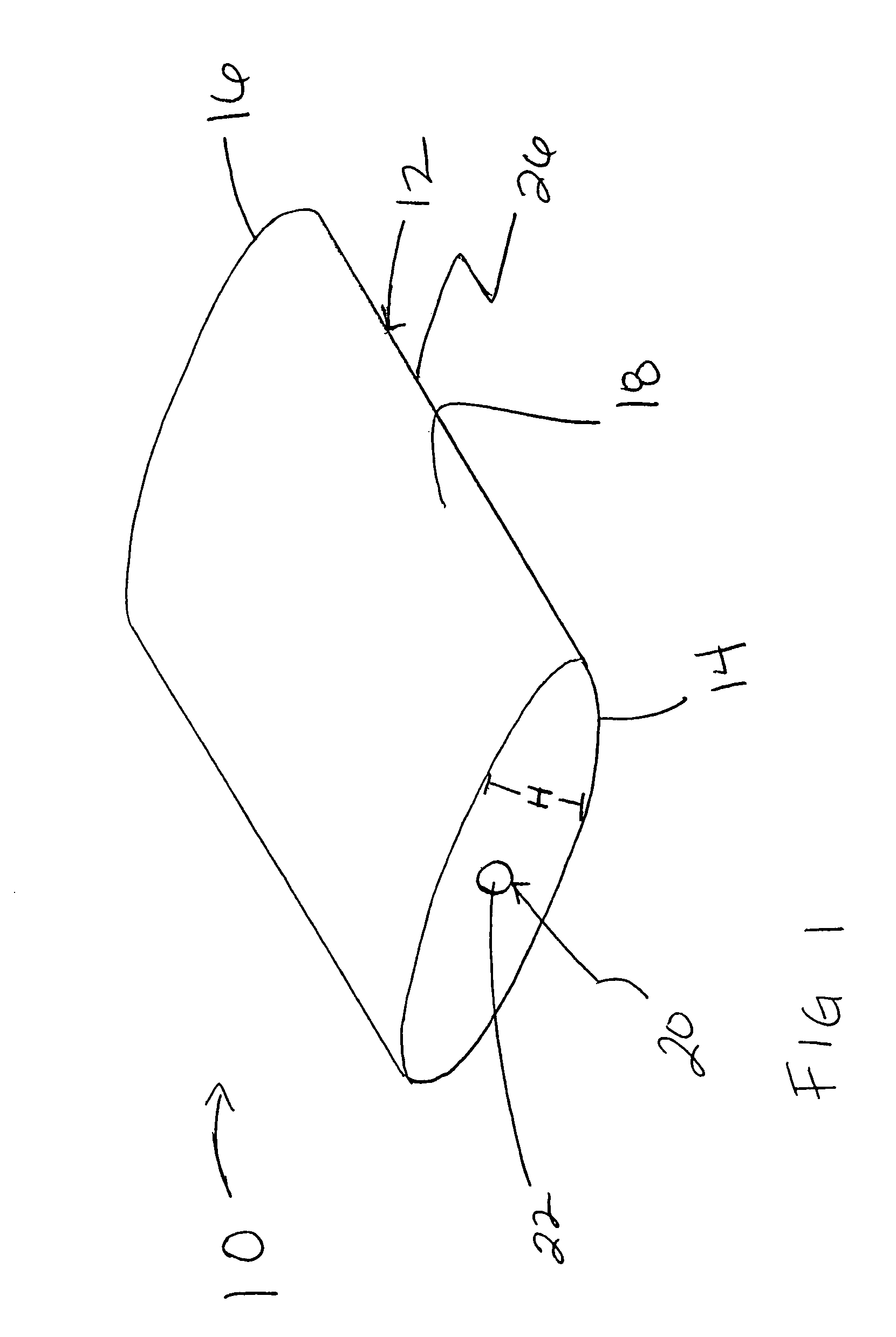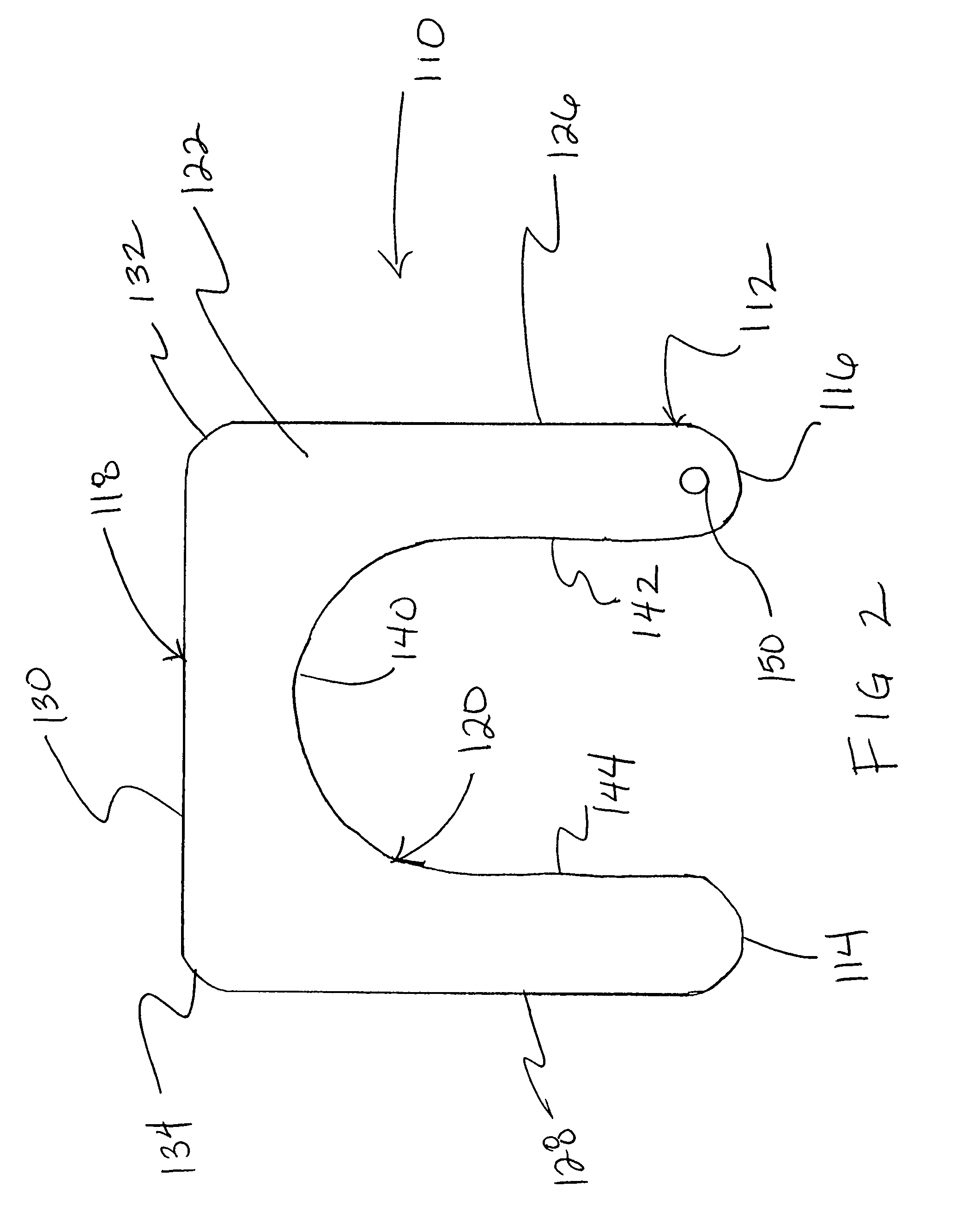Reusable surgical perioperative positioning system
a positioning system and surgical technology, applied in the field of medical positioning systems, can solve the problems of poor stability of fairly crude positioning devices, inability to facilitate appropriate safety, and occlusion of capillaries, and achieve the effects of sufficient resiliency, easy forming, and avoiding high interface pressure points
- Summary
- Abstract
- Description
- Claims
- Application Information
AI Technical Summary
Benefits of technology
Problems solved by technology
Method used
Image
Examples
Embodiment Construction
[0063]Referring initially to FIG. 1, a positioning system 10 in accordance with the invention includes at least one pad, cushion or pillow 12 that is constructed from a foam core (not shown) and a cover 26. Exemplary cushion 12 includes two elliptical or circular shaped ends 14, 16 and an oblong shaped body portion 18. Positioning system pads may include operating room table pads, stretcher pads and positioning pads.
[0064]In one embodiment, valve 20 is located on or within elliptical end 14. Valve 20 is not limited to this location, however, and may be located on or within any suitable surface of cushion 12 including oblong body portion 18.
[0065]Valve 20 is generally a lid, plug, or cover 22 applied to an aperture (not shown) so that by its movement, as by swinging, lifting and falling, sliding, turning, etc., valve 20 will open or close the aperture to permit or prevent passage of a fluid (not shown) such as air. The form of valve 20 is not particularly important so long as it can ...
PUM
 Login to View More
Login to View More Abstract
Description
Claims
Application Information
 Login to View More
Login to View More - R&D
- Intellectual Property
- Life Sciences
- Materials
- Tech Scout
- Unparalleled Data Quality
- Higher Quality Content
- 60% Fewer Hallucinations
Browse by: Latest US Patents, China's latest patents, Technical Efficacy Thesaurus, Application Domain, Technology Topic, Popular Technical Reports.
© 2025 PatSnap. All rights reserved.Legal|Privacy policy|Modern Slavery Act Transparency Statement|Sitemap|About US| Contact US: help@patsnap.com



